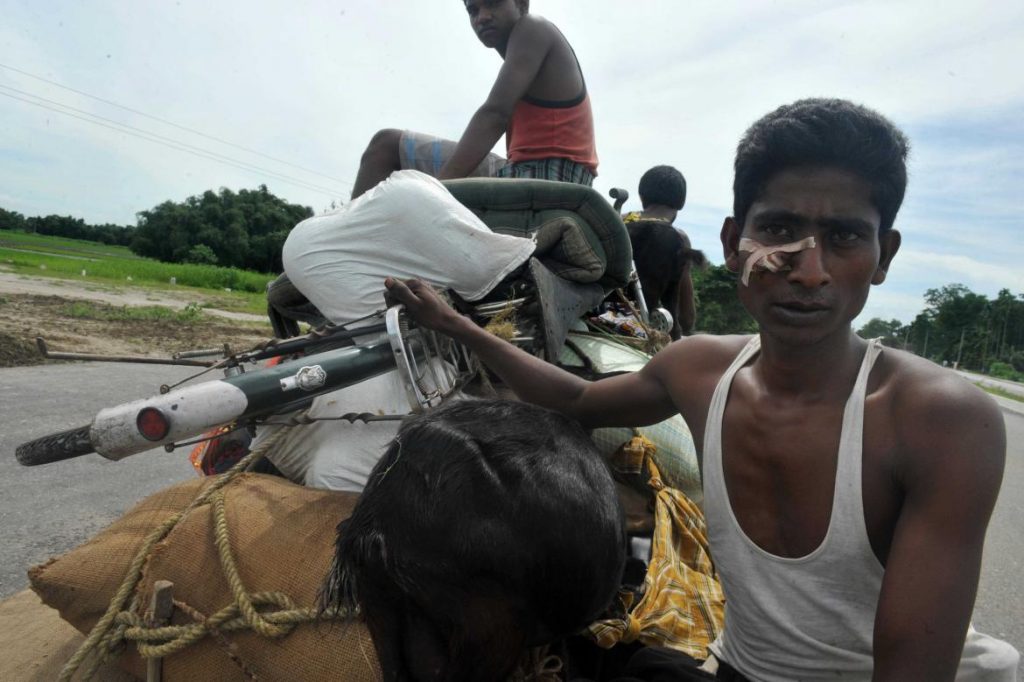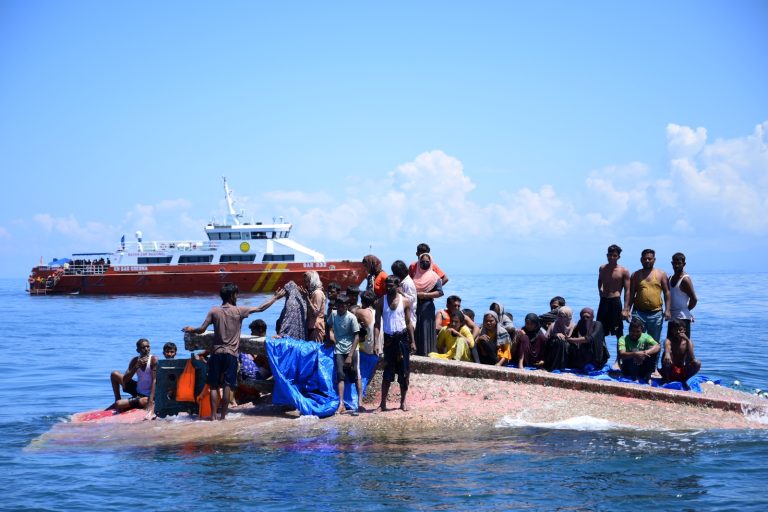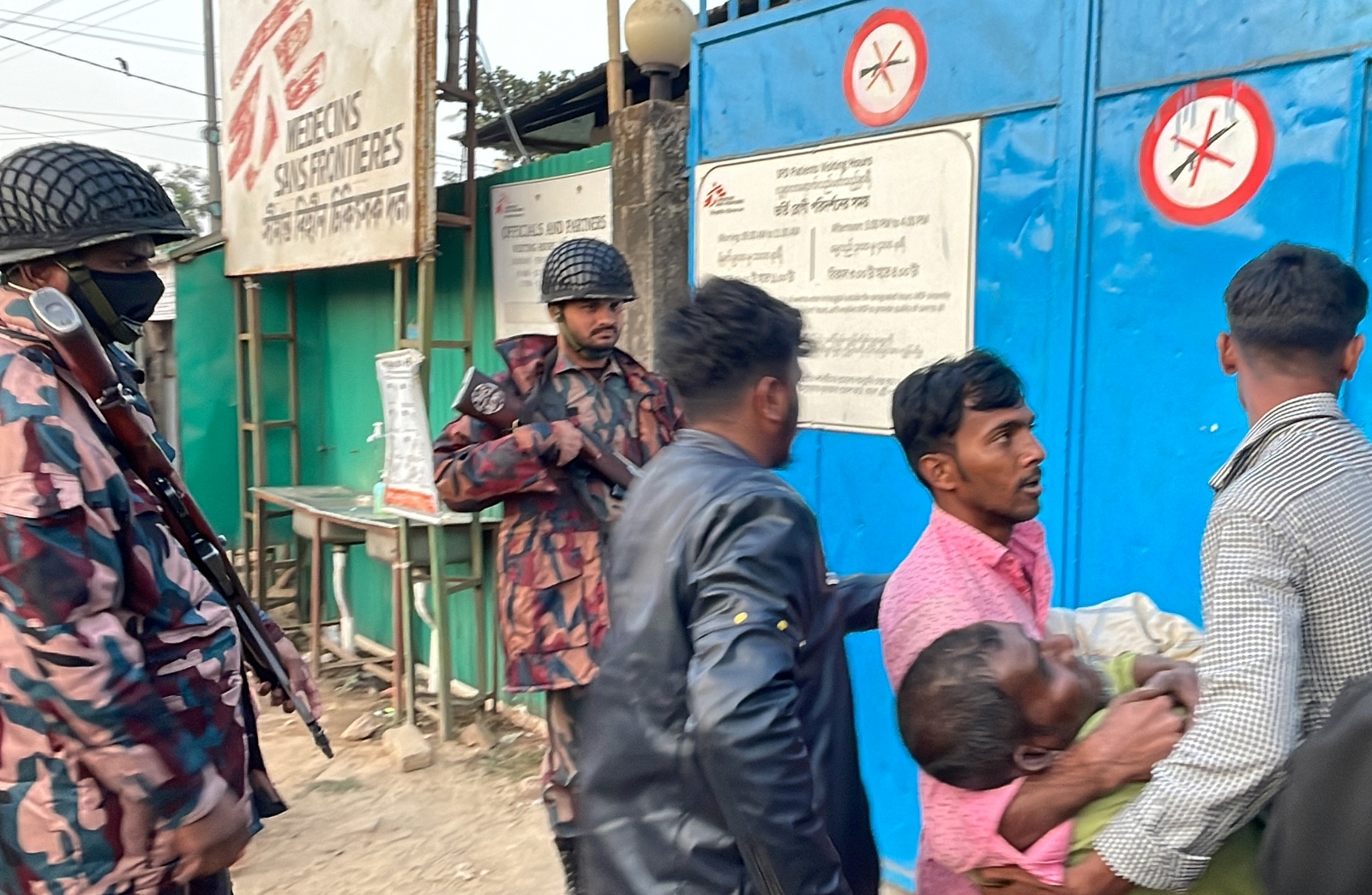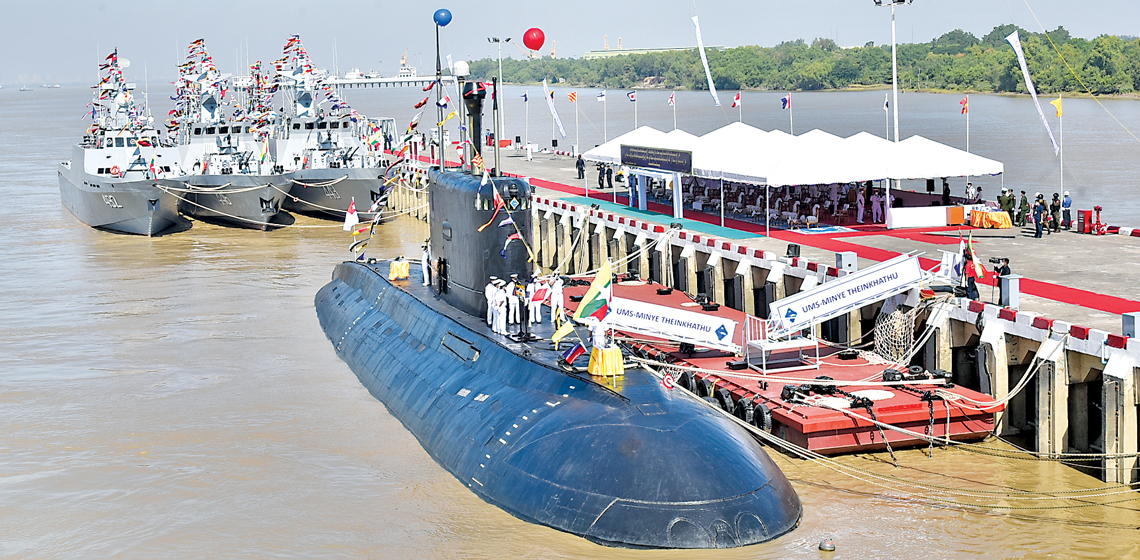Illegal immigration from Bangladesh has been a sensitive issue for decades in the northeastern Indian state of Assam, where the crisis over Rakhine State is being followed with interest … and some trepidation.
By MRATT KYAW THU | FRONTIER
IN THE northeastern Indian state of Assam, the exodus of more than 620,000 Rohingya Muslims from Myanmar to Bangladesh is being closely followed by politicians, officials and journalists.
Student-led protests in Assam against illegal immigration in the late 1970s and early 1980s resulted in 855 deaths. The issue was a factor in the slaughter in 1983 of 2,000 Muslim villagers who had been settled in the state from Bengal during British colonial rule.
The agitation led to the signing by the New Delhi and state governments and the All Assam Students Union of the 1985 Assam Accord, an agreement to update the National Register of Citizens to identify and deport “all foreigners”.
Tensions still simmer over the issue due to delays in the agreement’s implementation. A centre to implement the accord was opened by the state government in Guwahati, Assam’s biggest city, on December 10, 32 years after it was signed.
Support more independent journalism like this. Sign up to be a Frontier member.
About 40,000 suspected illegal immigrants are reported to remain in detention in Assam, and the state government in July urged New Delhi to raise their deportation with Bangladesh.
India’s Supreme Court asked New Delhi in 2014 to hold talks with Bangladesh to streamline the deportations. The delay is mainly because Bangladesh denies that the detainees are its citizens.
The lingering sensitivity in Assam over illegal immigration is one reason why Frontier encountered strong interest in the Rohingya crisis during a recent visit to Guwahati.
000_del6431003.jpg
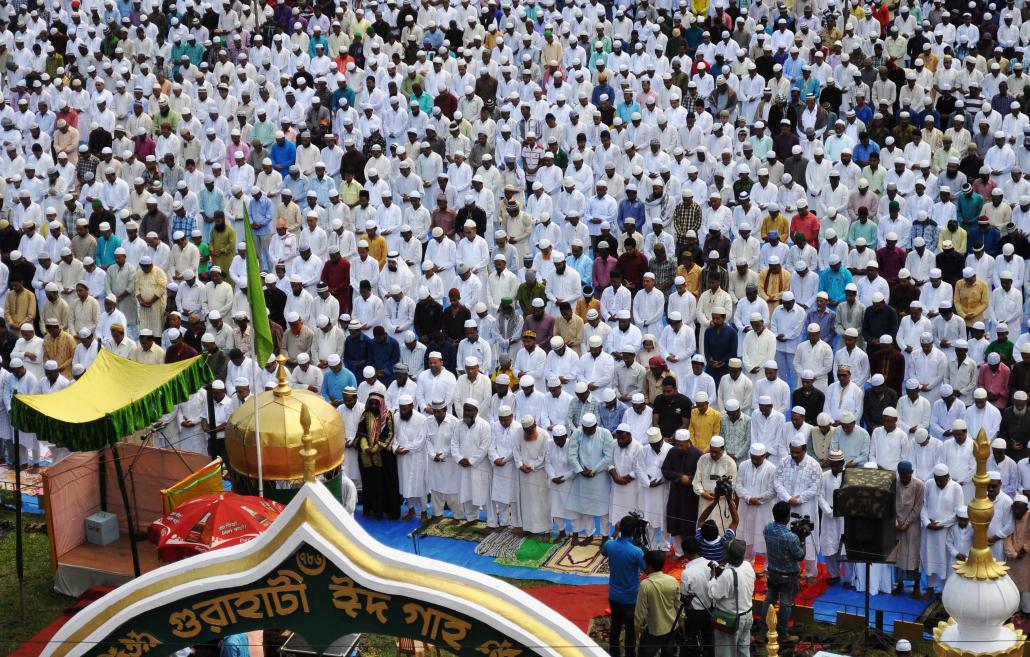
Indian Muslims offer Eid prayers to mark the end of Ramadan at the Eid Gah mosque in Guwahati on July 18, 2015. (AFP)
The tensions were reflected in a November 27 report in one of the state’s leading newspapers, the Assam Tribune, complaining about a lack of data on illegal immigrants from Bangladesh.
“There is no record in any government department of the number of such persons coming from Bangladesh and there is no mechanism to identify which persons came at which date,” the report said.
“Sources admitted that anyone coming into India from Bangladesh a day before can claim that he or she came six years back and there is no foolproof mechanism to ascertain the truth,” it said.
The issue of illegal immigration is particularly sensitive in Assam’s central Darrang District, bordered on one side by the Brahmaputra River, which enters the Bay of Bengal through Bangladesh. The 2011 census showed that Darrang has a population of 928,500, of which 64 percent are Muslims and 35 percent are Hindus. The proportions are reversed in the state’s population of about 31 million, in which Hindus comprise 64 percent and Muslims 34 percent. The 2011 census found that the increase in the number of Muslims in Assam was higher than any other Indian state since the previous count in 2001, when they comprised 30.9 percent of the state’s population.
Frontier travelled up the Brahmaputra to Darrang and found similarities between its Hindu community and the Buddhists living in Maungdaw Township in northern Rakhine, where most of the population was Muslim before August 25.
The Muslims in Darrang keep to themselves, said veteran Guwahati-based journalist and author, Mr Rajeev Bhattacharyya.
“People [from Darrang] usually come at night to Guwahati for commodities and daily necessities and they don’t normally communicate with others,” he told Frontier.
The tensions in Assam over illegal immigration from Bangladesh have been explored by Dr Namrata Goswani, a research fellow at the Institute for Defence Studies and Analyses in New Delhi.
In a 2010 briefing paper, she referred to a provision in the 1985 Assam Accord stipulating that anyone from Bangladesh settling in the state after March 25, 1971 – one day after the start of the Bangladesh War of Independence – was not a citizen but an illegal immigrant.
“This provision of the Accord has not been implemented and has therefore failed to change the nature of Bangladeshi immigration into Assam, now termed as a ‘silent invasion’,” Goswani wrote.
She said there was fear among Assamese “that this unchecked migration from across the border will subvert their way of life and change the demographic profile of the state in the near future. The lack of authentic data on illegal migrant flows only adds to the discomfort.”
The “discomfort” has prompted citizens groups in Assam to campaign for the state to adopt the so-called Inner-Line Permit system used in other northeastern Indian states. The system, used in Arunachal Pradesh, Mizoram and Nagaland, allows outsiders to enter and stay for a limited period.
The leader of an Assamese citizens group said earlier this year that immigration and infiltration were posing a threat to the identity, traditions and political interests of the state’s permanent settlers.
The move is said to have the support of Assamese Muslims, as well as members of the Islamic community in neighbouring Manipur, which abolished he Inner-Line Permit system in November 1950, allowing an unchecked influx of outsiders.
000_del6137893.jpg
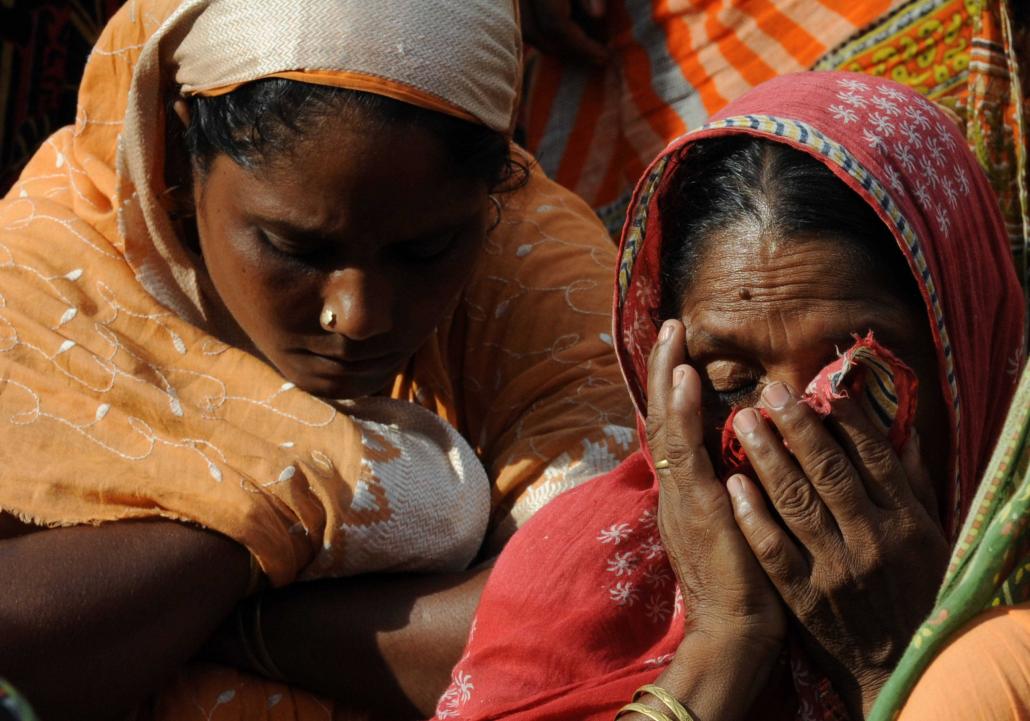
Displaced Indian Muslim villagers gesture at a relief camp in Simultapu village at Kokrajhar district of Assam in July, 2012. A week of communal clashes left at least 45 people dead. (AFP)
Manipur also shares a border with Myanmar, and with the states of Nagaland and Mizoram.
A newspaper in the Manipuri capital, Imphal, reported early this month that illegal migration from Bangladesh began in 1951 after the state abolished the ILP system.
The Imphal Free Press also said Muslim immigrants from Bangladesh were living isolated from other communities in Manipur’s Jiribam District, on the border with Assam.
India’s 2011 census put Manipur’s population at 2,855,794, of which most were Hindus (41.39 percent), followed by Christians (41.29 percent), Muslims (8.4 percent), and other religions.
Mr Suros Thokchom, a lecturer at Imphal’s GP Women’s College, said Manipuris were worried about the future implications of a rising migrant population. “Our government still has no data on the number of illegal immigrants entering the state,” he told Frontier.
The main problem, Thokchom said, was rampant corruption that enabled illegal immigrants to acquire citizenship. Because of the corruption it was common for people residing in other Indian states to travel to the northeast to illegally acquire documents ranging from citizenship papers to driving licences.
“To be a citizen, it is very easy in Manipur, no matter who you are,” Thokchom said.
The apparent ease of acquiring citizenship – and with it the right to vote – has aroused concerns among Hindus, Muslims and other residents of Assam that the influx of Bangladeshis could see extremist Islamic parties win seats in the state parliament.
There’s also been some anxiety in Assam about whether the agreement between Myanmar and Bangladesh to repatriate verified Rohingya refugees will be implemented.
Bhattacharyya said there was concern that the refugees might make India their “next destination”.
“We have to think and prepare for that for sure,” he said.
TOP PHOTO: Injured Indian Muslim villagers move to relief camps in Assam’s Kokrajhar district in July 2012 following an outbreak of communal conflict. (AFP)


